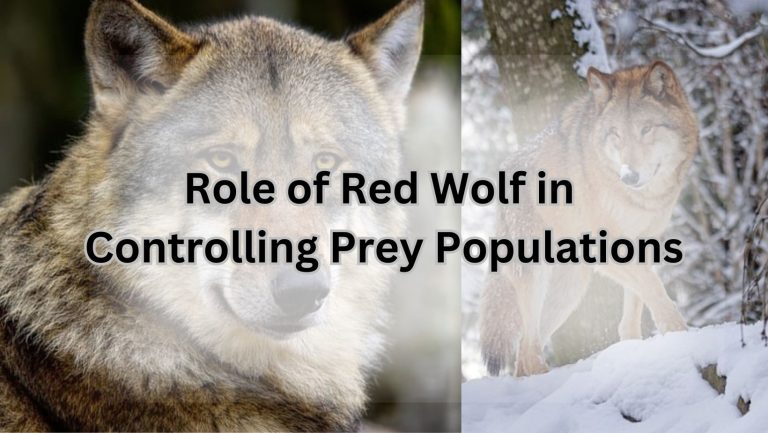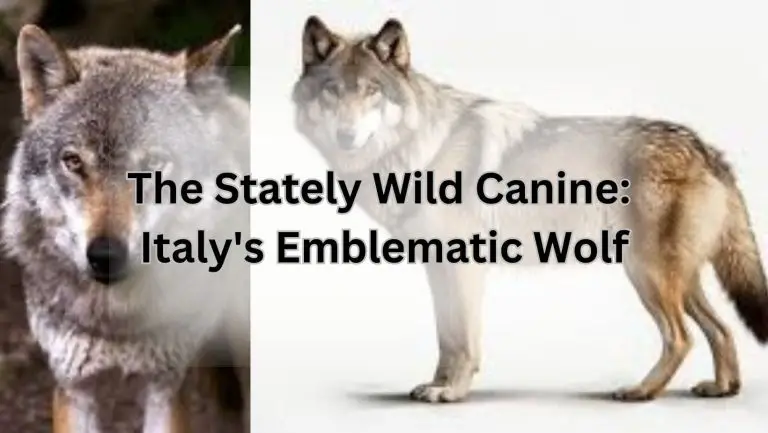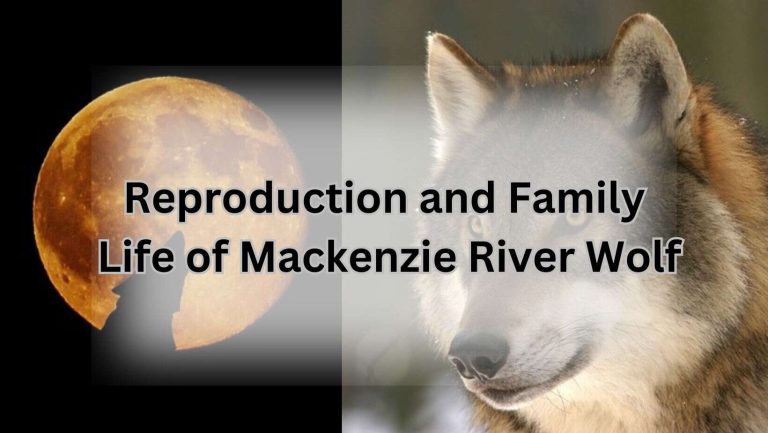Wild Vancouver Island Wolf: Unleash the Canid Magic!

Introduction: Discover the Fascinating Vancouver Island Wolf
Are you ready to embark on a wild adventure into the world of the Vancouver Island wolf? These majestic creatures, also known as Canis lupus crassodon, are a unique subspecies of the gray wolf that call the beautiful Vancouver Island home. Let’s dive into the captivating world of these coastal wolves and uncover what makes them so special!
Overview of Vancouver Island Wolf
The Vancouver Island wolf, also referred to as the British Columbia wolf or coastal wolf, is a subspecies of the gray wolf that is specifically found on Vancouver Island and the surrounding coastal areas of the Pacific Northwest. These wolves are known for their stunning appearance, with coats ranging from white to black and everything in between, making them a sight to behold in the wild.
History and Evolution of the Species
The history of the Vancouver Island wolf is as rich and diverse as the landscapes they roam. These wolves have evolved over time to adapt to the unique environment of Vancouver Island, where they have carved out their own niche in the ecosystem. From their hunting techniques to their social structures, the Vancouver Island wolf has a fascinating story to tell.
Importance of Conservation Efforts
As with many wildlife species, the Vancouver Island wolf faces threats to its survival, including habitat loss and human-wildlife conflict. Conservation efforts are crucial to ensuring the continued existence of these beautiful creatures in the wild. By learning more about the Vancouver Island wolf and supporting conservation initiatives, we can all play a part in protecting this iconic species for generations to come.
Physical Characteristics
Size and Weight of Vancouver Island Wolf
Now, let’s talk about the size and weight of the Vancouver Island wolf, also known as Canis lupus crassodon. These majestic creatures are typically smaller than their mainland relatives, with males weighing around 60-80 pounds and females around 50-70 pounds. Despite their smaller size, they are still fierce and formidable predators in the wild!
Fur Color and Texture
Ah, the fur of the Vancouver Island wolf is truly a sight to behold! Their coats come in a range of colors, from creamy white to jet black, with some individuals sporting a beautiful mix of grays and browns. The fur is thick and luxurious, perfect for keeping them warm during those chilly island nights.
Adaptations for Survival in the Wild
These British Columbia wolves, also known as coastal wolves, have some impressive adaptations that help them thrive in their rugged island habitat. Their keen senses of sight, smell, and hearing make them excellent hunters, able to track down prey with ease. They also have strong jaws and sharp teeth for tearing into their meals, whether it’s a tasty deer or a juicy salmon.
One of the most fascinating adaptations of the Vancouver Island wolf is their ability to swim! Yes, you heard that right – these wolves are excellent swimmers and have been known to traverse the island’s waterways in search of food. Just imagine a wolf doing the doggy paddle – now that’s a sight to see!
So, next time you find yourself on Vancouver Island, keep an eye out for these Pacific Northwest wolves. You never know when you might catch a glimpse of these elusive and enchanting creatures in the wild!
### Habitat and Range
Ah, the majestic Vancouver Island wolf, also known as Canis lupus crassodon, roams the beautiful landscapes of British Columbia with its unique coastal wolf charm. Let’s dive into its habitat, range, and interactions with other wildlife species on Vancouver Island.
#### Natural Habitat of Vancouver Island Wolf
The Vancouver Island wolf is a true coastal dweller, preferring the lush forests, rugged coastlines, and abundant prey that this stunning island has to offer. These wolves are known for their adaptability, thriving in various habitats from dense forests to rocky shores. They are the true kings and queens of the Pacific Northwest, blending seamlessly into their surroundings with their sleek coats and keen hunting skills.
#### Geographic Range on Vancouver Island
From the northern tip to the southern shores, the Vancouver Island wolf can be found roaming its territory with grace and agility. Whether they’re exploring the remote wilderness of Strathcona Provincial Park or navigating the rocky beaches of Tofino, these wolves are truly at home in this diverse landscape. Keep your eyes peeled while hiking through the old-growth forests or strolling along the sandy shores – you never know when you might catch a glimpse of these elusive creatures.
#### Interaction with Other Wildlife Species
The Vancouver Island wolf is not just a lone wolf – they play a vital role in the ecosystem, interacting with a variety of other wildlife species. From hunting deer and elk to scavenging for fish along the coastline, these wolves are true opportunists. They also have to navigate their relationships with other predators like cougars and bears, making for some interesting wildlife dynamics on the island. So, next time you’re out exploring Vancouver Island, remember to respect the delicate balance of nature and appreciate the unique role that the Vancouver Island wolf plays in this wild and wonderful ecosystem.
Diet and Hunting Behavior
When it comes to the Vancouver Island wolf, understanding its diet and hunting behavior is crucial to appreciating this majestic creature’s role in the local ecosystem. Let’s dive into the fascinating world of the Canis lupus crassodon and explore what makes them such skilled predators.
Primary Prey of Vancouver Island Wolf
The Vancouver Island wolf has quite the diverse palate, feasting on a variety of prey species that call the Pacific Northwest home. From deer and elk to smaller mammals like rodents and rabbits, these British Columbia wolves are true opportunists when it comes to hunting for their next meal. They even have a taste for seafood, with reports of them scavenging along the coast for fish and marine invertebrates. Talk about a well-rounded diet!
Hunting Techniques and Strategies
Coastal wolves are known for their cunning hunting techniques, often working together in packs to take down larger prey. These wolves are skilled at ambushing their targets, using stealth and teamwork to outsmart their unsuspecting victims. From strategic flanking maneuvers to coordinated attacks, the Vancouver Island wolf is a force to be reckoned with in the wild.
Impact on Local Ecosystem
As top predators in their ecosystem, Vancouver Island wolves play a crucial role in maintaining the balance of the local food chain. By controlling the populations of herbivores like deer and elk, these wolves help prevent overgrazing and ensure the health of plant communities in the region. Additionally, their presence can have cascading effects on other wildlife species, creating a ripple effect that shapes the entire ecosystem.
Behavior and Social Structure
Pack Dynamics and Hierarchy
Ah, the Vancouver Island wolf, also known as Canis lupus crassodon, is a fascinating creature when it comes to pack dynamics and hierarchy. These British Columbia wolves have a complex social structure, with a dominant alpha pair leading the pack. Think of them as the cool kids in high school, calling the shots and making sure everyone follows the rules. The rest of the pack falls into place based on their rank, with the younger wolves learning from the more experienced members.
Communication Among Pack Members
Communication is key in the world of the Vancouver Island wolf. These Coastal wolves have a variety of ways to talk to each other, from howling to body language. It’s like they have their own secret language that only they can understand. Imagine being part of a group chat where everyone knows exactly what’s going on without saying a word – that’s the wolf pack for you!
Reproductive Behavior and Family Units
When it comes to reproductive behavior, the Vancouver Island wolf takes family seriously. They form strong family units, with the alpha pair usually being the parents of the rest of the pack. It’s like a big, furry family reunion every day! These Pacific Northwest wolves are dedicated parents, taking care of their pups and teaching them the ways of the wild. It’s a beautiful sight to see, a true testament to the bond between these majestic creatures.
Threats and Conservation Status
6.1 Human Encroachment on Habitat
Now, let’s talk about the Vancouver Island wolf’s version of “get off my lawn” – human encroachment on their habitat! These majestic creatures are facing a real estate crisis as humans continue to expand into their territories. Imagine trying to enjoy a peaceful nap in your den, only to wake up to the sound of construction next door. It’s like having noisy neighbors, but with bulldozers and cranes instead of loud music!
6.2 Climate Change Effects on Population
Climate change is like that unwanted guest who just won’t leave – it’s affecting everyone, including our Vancouver Island wolf friends. Rising temperatures, changing weather patterns, and habitat loss are all putting pressure on these wolves. It’s like trying to find a cozy spot in a crowded room, but the room keeps getting hotter and smaller. Not a fun situation for our furry friends!
6.3 Conservation Efforts and Protection Measures
But fear not, dear readers, for there are heroes out there fighting for the Vancouver Island wolf! Conservation efforts and protection measures are in place to help these wolves thrive. It’s like having a team of bodyguards ensuring your safety at all times – except in this case, the bodyguards are dedicated conservationists and the threat is habitat destruction, not paparazzi!
Interactions with Humans
Historical Perceptions of Vancouver Island Wolf
Let’s take a trip down memory lane and explore the historical perceptions of the Vancouver Island wolf. These majestic creatures have long been a part of the folklore and traditions of the indigenous peoples of the region. Known for their cunning and resilience, the Vancouver Island wolf has been both feared and revered throughout history.
Conflicts with Livestock and Pets
As much as we love our furry friends, conflicts between the Vancouver Island wolf and livestock or pets can sometimes arise. It’s important to be aware of these potential conflicts and take precautions to protect both our domestic animals and the wild wolves. After all, we all just want to live harmoniously in this beautiful world!
Ecotourism Opportunities and Responsible Viewing
Now, let’s talk about the exciting ecotourism opportunities that the Vancouver Island wolf presents. Imagine embarking on a thrilling adventure to catch a glimpse of these elusive creatures in their natural habitat. Just remember, responsible viewing is key to ensuring the safety and well-being of both the wolves and yourself. So, grab your binoculars and get ready for an unforgettable experience!
8. Research and Studies
8.1 Scientific Studies on Vancouver Island Wolf
As a Canid Wild Life Lover with 20 years of experience, I can tell you that the Vancouver Island wolf, scientifically known as Canis lupus crassodon, has been the subject of numerous scientific studies over the years. Researchers have delved into various aspects of the wolf’s behavior, habitat, diet, and interactions with other species in its ecosystem. These studies have provided valuable insights into the life of this elusive coastal wolf.
8.2 Tracking and Monitoring Programs
Tracking and monitoring programs have played a crucial role in studying the Vancouver Island wolf population. By using GPS collars and camera traps, researchers have been able to track the movements of these wolves, gather data on their territories, and monitor their behavior. These programs have helped in understanding the wolf’s range, population dynamics, and interactions with humans and other wildlife species.
8.3 Contributions to Wildlife Research and Conservation
The research and studies conducted on the Vancouver Island wolf have not only expanded our knowledge of this unique subspecies but have also contributed to wildlife research and conservation efforts. By understanding the ecological role of these wolves in their ecosystem, conservationists can develop strategies to protect their habitats, mitigate human-wildlife conflicts, and ensure the long-term survival of the species. The Vancouver Island wolf serves as a symbol of the rich biodiversity of the Pacific Northwest and the importance of preserving our natural heritage.
9. Myths and Misconceptions
9.1 Common Myths About Vancouver Island Wolf
Let’s debunk some common myths surrounding the Vancouver Island wolf! One prevalent misconception is that these wolves are aggressive predators that pose a threat to humans. In reality, Vancouver Island wolves are shy and elusive creatures that typically avoid human interaction. Another myth is that they are detrimental to livestock and wildlife populations, when in fact, they play a crucial role in maintaining the ecosystem’s balance.
9.2 Clarifying Misconceptions Through Education
Education is key in dispelling misconceptions about the Vancouver Island wolf. By understanding their behavior, habitat, and importance in the ecosystem, we can foster a sense of coexistence and appreciation for these magnificent creatures. It’s essential to promote accurate information and raise awareness about the true nature of these wolves to ensure their protection and conservation.
9.3 Promoting Coexistence and Understanding
Coexistence is the way forward when it comes to living harmoniously with the Vancouver Island wolf. By respecting their natural habitat and implementing measures to reduce human-wildlife conflict, we can create a sustainable environment where both humans and wolves can thrive. Understanding the importance of these apex predators in the ecosystem is crucial for their survival and the overall health of the region.
Future Outlook
Challenges Facing Vancouver Island Wolf
The Vancouver Island wolf, also known as Canis lupus crassodon, faces a myriad of challenges in its quest for survival. As a British Columbia wolf, this coastal wolf species is unique to the Pacific Northwest and plays a crucial role in the ecosystem of Vancouver Island. However, habitat loss, human-wildlife conflict, and climate change pose significant threats to the population of these majestic creatures.
Potential Solutions for Long-Term Survival
Despite the challenges, there is hope for the Vancouver Island wolf. Conservation efforts, such as habitat restoration and wildlife corridors, can help protect their natural habitat and ensure their long-term survival. Additionally, implementing measures to reduce human-wildlife conflict, such as education and awareness programs, can help mitigate the impact of human activities on these wolves.
Role of Public Awareness and Advocacy
Public awareness and advocacy play a crucial role in the conservation of the Vancouver Island wolf. By raising awareness about the importance of protecting these wolves and their habitat, individuals can contribute to conservation efforts and support initiatives aimed at preserving this iconic species. Advocacy groups and organizations dedicated to wildlife conservation also play a vital role in advocating for policies and regulations that protect the Vancouver Island wolf.
In conclusion, the future outlook for the Vancouver Island wolf is a mix of challenges and opportunities. By addressing the threats facing these wolves, implementing solutions for their long-term survival, and raising public awareness and advocacy, we can ensure that future generations will continue to marvel at the beauty and resilience of the Vancouver Island wolf. Let’s work together to protect these magnificent creatures and ensure a bright future for the Canis lupus crassodon on Vancouver Island.






